08
Apr
Focus on Pesticide Bans Continues in U.S. and EU, While Toxic Pesticide Use Continues
 (Beyond Pesticides, April 8, 2019)Â Officials in Europe and the U.S. focus on banning problem pesticides, raising concerns about their replacements in the face of pesticide-intensive management strategies, while organic advocates call for a systems change in land management. In reference to widespread community bans of Roundup/glyphosate, Cary Gillam, author of Whitewash, told last yearâs Beyond Pesticidesâ Forum, âGlyphosate is the poster child for the bigger pesticide problem.â She continues, âIf it goes away tomorrow, we are not okay.â Because of this, Beyond Pesticides has strategically sought to transform our countryâs approach to pest management, both agricultural and residential/structural, by eliminating a reliance on pesticides and advancing organic management practices that do not rely on toxic inputs. This Daily News Blog post offers updates on progress in the European Union (EU), in the U.S. Congress, and in communities and sates nationwide.
(Beyond Pesticides, April 8, 2019)Â Officials in Europe and the U.S. focus on banning problem pesticides, raising concerns about their replacements in the face of pesticide-intensive management strategies, while organic advocates call for a systems change in land management. In reference to widespread community bans of Roundup/glyphosate, Cary Gillam, author of Whitewash, told last yearâs Beyond Pesticidesâ Forum, âGlyphosate is the poster child for the bigger pesticide problem.â She continues, âIf it goes away tomorrow, we are not okay.â Because of this, Beyond Pesticides has strategically sought to transform our countryâs approach to pest management, both agricultural and residential/structural, by eliminating a reliance on pesticides and advancing organic management practices that do not rely on toxic inputs. This Daily News Blog post offers updates on progress in the European Union (EU), in the U.S. Congress, and in communities and sates nationwide.
The EU is poised to ban clorothalanil, a commonly used â and highly toxic â organochlorine fungicide, The Guardian reported, in mid-to-late May 2019. After a review by the European Food Safety Authority (EFSA), EU states voted to approve a ban. EFSA identified as a chief safety concern the possibility that breakdown products (metabolites) of the compound may cause damage to DNA. The group also reported that for all identified uses, there is âa high risk to amphibians.â It further noted that recent research points to chlorothalonil (and other fungicides) as primary contributors to the alarming decline in bumblebee populations. The ban comes shortly after the European Parliamentâs Special Committee (the PEST Committee) approval of a draft report recommending significant strengthening of pesticide restrictions.
Chlorothalonil, sold commercially under the names Bravo, Echo, and Daconil, is a broad- spectrum, non-systemic fungicide used to control fungal foliar diseases of vegetable, field, and ornamental crops; it is also deployed as a wood protectant, anti-mold and antimildew agent, bactericide, microbiocide, algaecide, insecticide, and acaricide. Its impacts on bumblebee and other bee populations have been chronicled by Beyond Pesticides and others; the mechanism of action is strongly suspected to involve disruption of the organismsâ gut biomes. The chemical is also regarded as a likely human carcinogen.
The United Kingdomâs National Farmers Union reacted to this EU move by calling it âoverly precautionary,â and warning that such a ban fails âto consider the particular importance of this [pesticide] in the control of critical fungal diseases and in managing disease resistance. As a result, we believe sectors of UK agricultural and horticultural production will be put at significant risk.â
However, Mark Shardlow, director of the nonprofit Buglife, supported the ban, saying that the fact that established links to bumblebee harm had not led to safety tests for wild bees showed the inadequacy of the EUâs regulatory system. He added, â[T]he EU process failed to apply the EFSA guidance on assessing risk to bees, so there were no bumblebee safety tests. When will regulators learn the lessons, [and] stop kowtowing to the demands of the pesticide manufacturers?â
A spokeswoman for the European Commission (EC), the executive branch of the EU, defended the action, saying, âThe [chlorothalonil ban] is based on EFSAâs scientific assessment, which concluded that the approval criteria do not seem to be satisfied for a wide range of reasons. Great concerns are raised in relation to contamination of groundwater by metabolites of the substance.â
Back across the pond, in the ongoing âchlorpyrifos saga,â Senator Tom Udall of New Mexico introduced a bill in the U.S. Senate on March 28, just one day after the current Environmental Protection Agency (EPA) once again argued to delay the agencyâs own 2016 ban on the compound, to ban the use of the toxic pesticide, chlorpyrifos. If passed and enacted, the Protect Children, Families and Farmworkers from Nerve Agent Pesticides Act of 2019 (S.921) would ban the compound, widely recognized as a dangerous neurotoxin that imperils human health, and puts children and farmworkers at particular risk. Chlorpyrifos has impacts beyond its neurotoxicity; it is also associated with harmful effects on human endocrine, reproductive, hepatic, and renal function, is a skin and eye irritant, and distorts development. Cosponsors of the Senate bill include Senators Blumenthal, Booker, Cardin, Feinstein, Gillibrand, Harris, Leahy, Markey, Merkley, Sanders, Van Hollen, and Whitehouse.
The chlorpyrifos saga began as far back as 2000, with an agreement between EPA and Dow AgroSciences, maker of the pesticide, to stop the sale of the chemical for most home, lawn, and garden uses because of its health risks to children, which proscription did happen. Fast forward to 2015, when EPA proposed to eliminate all food tolerances for the compound â functionally, a ban â although other non-food uses, for landscape and turf management (especially golf courses), and for greenhouse and mosquito control were not affected by the decision. This proposal was made public on the very day that a U.S. Court of Appeals judge in the Ninth Circuit ordered the agency to respond, finally, to a suit filed nine years earlier petitioning for a ban on all uses of chlorpyrifos, given the established health risks of exposure. EPA dithered, ultimately promising to release a final rule in December 2016.
In 2016, the agency did develop a regulation banning the compound. Then, in March 2017, Trump EPA Administrator Scott Pruitt, just three weeks after meeting âprivatelyâ with the CEO of Dow chemical, rejected the conclusions of EPAâs own scientists and announced that EPA would reverse course and not ban the use of chlorpyrifos on food crops. Last August, the Ninth Circuit Court once again weighed in, ordering EPA to implement its previous proposed ban of the chemical in the U.S.
Andrew Wheeler, the EPA Administrator who followed Mr. Pruitt, soon after asked the court to rehear the chlorpyrifos case in an en banc proceeding â one in which a case is heard before all the judges of a court rather than by a selected panel of them. (The request is based primarily on challenges to that courtâs authority in the matter.) In February 2019, the court granted the request, meaning that public health, labor, and science advocates will have to re-argue, again, that chlorpyrifos should be banned from all food uses. In the wake of this protracted delay, legislators such as Senator Udall have begun to pick up the mantle, given EPAâs failure to protect the public from this toxic and dangerous compound.
Over on the U.S. House side, Representative Nydia VelĂĄzquez of New York filed a bill in January, the Ban Toxic Pesticides Act (HR.230), which would ban chlorpyrifos from any commerce in the state. These Senate and House bills follow on previous iterations filed by Sen. Udall and Rep. VelĂĄzquez, as well as other legislative initiatives, chronicled here. Rep. VelĂĄzquez said of the bill, âItâs unconscionable for EPA to turn a blind eye as children and workers are exposed to this poison. If the EPA wonât do its job when it comes to chlorpyrifos, then Congress needs to act â and do so quickly. As long as there are efforts underway in the courts or administratively to undo the ban on this toxic pesticide, Iâll be working to see chlorpyrifos removed from commerce through the legislative process.â
Momentum is growing for better protection from pesticide use, as these examples and others demonstrate. But ultimately, the widespread adoption of organic management practices is what will provide genuine and long-term protection of human and environmental health from compounds like chlorpyrifos and chlorothalonil. Beyond Pesticides has long sought a broad-scale marketplace transition to organic practices, which prohibit the use of toxic synthetic pesticides. Organic production is a viable, scalable, cost-effective method without any of the long-associated harm of conventional agriculture, but it requires public advocacy to move government to act effectively on behalf of public health and environmental integrity.
All unattributed positions and opinions in this piece are those of Beyond Pesticides.
Sources: https://www.theguardian.com/environment/2019/mar/29/eu-bans-widely-used-pesticide-over-safety-concerns and https://earthjustice.org/news/press/2019/sen-udall-senate-leaders-introduce-bill-to-ban-chlorpyrifos-nationwide and https://www.fredericknewspost.com/news/economy_and_business/agriculture/md-senate-to-consider-statewide-ban-of-the-pesticide-chlorpyrifos/article_6d72c120-565d-50fa-b63a-295e720c840b.html









 (Beyond Pesticides, April 5, 2019) Beyond Pesticidesâ 37th National Pesticide Forum,
(Beyond Pesticides, April 5, 2019) Beyond Pesticidesâ 37th National Pesticide Forum,  (Beyond Pesticides, April 4, 2019) Contamination of drinking water with toxic breakdown products and risks to fish and and amphibians has led to a ban on the fungicide
(Beyond Pesticides, April 4, 2019) Contamination of drinking water with toxic breakdown products and risks to fish and and amphibians has led to a ban on the fungicide  (Beyond Pesticides, April 4, 2019)Â Following on its
(Beyond Pesticides, April 4, 2019)Â Following on its  (Beyond Pesticides, April 2, 2019)Â Throughout the month of April, and in celebration of Earth Day on April 22, Natural Grocers is inviting the community
(Beyond Pesticides, April 2, 2019)Â Throughout the month of April, and in celebration of Earth Day on April 22, Natural Grocers is inviting the community 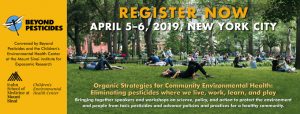 (Beyond Pesticides, April 2, 2019)Â The new documentary film âGround Warâ will have its New York City premiere screening on Saturday, April 6, 2019, 7:30pm at Florence Gould Hall, 55 East 59th Street, New York, NY. The film is a moving depiction of a sonâs quest for answers about the cause of his fatherâs cancerâwhich takes him into the world of doctors, scientists, pesticide regulators, victims of pesticide poisoning, activists, and land managers. The issue is exposure to pesticides used to manage lawns and playing fields and the fatherâs exposure as an avid golfer. The son, who is the filmmaker, finds others on the same search for answers because of harm or death of a loved one, then finds a solution in the work of activists and organic land managers.
(Beyond Pesticides, April 2, 2019) The new documentary film âGround Warâ will have its New York City premiere screening on Saturday, April 6, 2019, 7:30pm at Florence Gould Hall, 55 East 59th Street, New York, NY. The film is a moving depiction of a sonâs quest for answers about the cause of his fatherâs cancerâwhich takes him into the world of doctors, scientists, pesticide regulators, victims of pesticide poisoning, activists, and land managers. The issue is exposure to pesticides used to manage lawns and playing fields and the fatherâs exposure as an avid golfer. The son, who is the filmmaker, finds others on the same search for answers because of harm or death of a loved one, then finds a solution in the work of activists and organic land managers. (Beyond Pesticides, April 1, 2019) National Organic Standards Board (NOSB) meets next month in Seattle, Washington to debate issues concerning what goes into your organic food. Written comments are due April 4. The format for messaging the NOSB requires copying and pasting comments into regulations.gov, so we apologize that this is not a “single click” action. Please add a personal message about why this is important to you at the top of your comments, if possible.
(Beyond Pesticides, April 1, 2019) National Organic Standards Board (NOSB) meets next month in Seattle, Washington to debate issues concerning what goes into your organic food. Written comments are due April 4. The format for messaging the NOSB requires copying and pasting comments into regulations.gov, so we apologize that this is not a “single click” action. Please add a personal message about why this is important to you at the top of your comments, if possible. (Beyond Pesticides, March 29, 2019) The U.S. Environmental Protection Agency (
(Beyond Pesticides, March 29, 2019)Â The U.S. Environmental Protection Agency ( (Beyond Pesticides, March 28, 2019) A set of documents obtained by the Center for Biological Diversity reveals that the Trump administration has known for over a year â and actively concealed â that the organophosphate insecticide chlorpyrifos jeopardizes the existence of 1,399 endangered species. Top officials at the U.S. Department of the Interior, including Acting Secretary David Bernhardt, were privy to and prevented the release of a âbiological opinion,â completed by the Fish and Wildlife Service (FWS) in 2017, which contains a full analysis of the extensive environmental impacts wrought by three organophosphate insecticides.
(Beyond Pesticides, March 28, 2019) A set of documents obtained by the Center for Biological Diversity reveals that the Trump administration has known for over a year â and actively concealed â that the organophosphate insecticide chlorpyrifos jeopardizes the existence of 1,399 endangered species. Top officials at the U.S. Department of the Interior, including Acting Secretary David Bernhardt, were privy to and prevented the release of a âbiological opinion,â completed by the Fish and Wildlife Service (FWS) in 2017, which contains a full analysis of the extensive environmental impacts wrought by three organophosphate insecticides. (Beyond Pesticides, March 27, 2019) Exposure to commonly used pesticides in the womb and during the first year of life is linked to a higher risk of developing autism, according to the study, âPrenatal and infant exposure to ambient pesticides and autism spectrum disorder in children: population based case-control study,â
(Beyond Pesticides, March 27, 2019) Exposure to commonly used pesticides in the womb and during the first year of life is linked to a higher risk of developing autism, according to the study, âPrenatal and infant exposure to ambient pesticides and autism spectrum disorder in children: population based case-control study,â  (Beyond Pesticides, March 25, 2019)Â EPA is using a regulatory loophole â the âtreated articles exemptionâ â to allow systemic insecticides to be used in mass quantities, without regulating or labeling them as required under the Federal Insecticide, Fungicide and Rodenticide Act (FIFRA). EPA does not currently assess adverse effects on the environment and public health caused by widespread use of neonicotinoid insecticides delivered through seeds coated with the insecticides, resulting in widespread exposure to one of the most environmentally damaging classes of chemicals on the market.
(Beyond Pesticides, March 25, 2019)Â EPA is using a regulatory loophole â the âtreated articles exemptionâ â to allow systemic insecticides to be used in mass quantities, without regulating or labeling them as required under the Federal Insecticide, Fungicide and Rodenticide Act (FIFRA). EPA does not currently assess adverse effects on the environment and public health caused by widespread use of neonicotinoid insecticides delivered through seeds coated with the insecticides, resulting in widespread exposure to one of the most environmentally damaging classes of chemicals on the market. (Beyond Pesticides, March 22, 2019) A
(Beyond Pesticides, March 22, 2019) A  (Beyond Pesticides, March 21, 2019) Corporate food giant General Mills has thrown some weight behind regenerative agriculture, committing to converting one million acres of farmland to regenerative practices by 2030. Some – but not all – of the initiative involves organic land management.
(Beyond Pesticides, March 21, 2019) Corporate food giant General Mills has thrown some weight behind regenerative agriculture, committing to converting one million acres of farmland to regenerative practices by 2030. Some – but not all – of the initiative involves organic land management.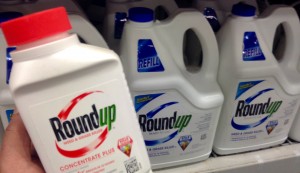 (Beyond Pesticides, March 20, 2019)Â In a second verdict against Bayer/Monsanto yesterday, a jury found unanimously that a California manâs non Hodgkin lymphoma (NHL) was substantially caused by the herbicide glyphosate (Roundup). The case being heard in federal court in San Francisco now moves to the damages phase. Last August in
(Beyond Pesticides, March 20, 2019)Â In a second verdict against Bayer/Monsanto yesterday, a jury found unanimously that a California manâs non Hodgkin lymphoma (NHL) was substantially caused by the herbicide glyphosate (Roundup). The case being heard in federal court in San Francisco now moves to the damages phase. Last August in 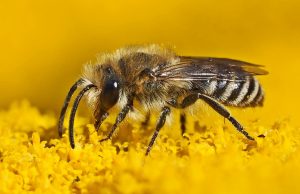 (Beyond Pesticides, March 19, 2019) Research is beginning to explain how systemic neonicotinoid insecticides affect often overlooked species of ground nesting bees. While much of the current scientific literature has focused on the impacts of pesticides to bumblebees and honey bees, a study,Â
(Beyond Pesticides, March 19, 2019) Research is beginning to explain how systemic neonicotinoid insecticides affect often overlooked species of ground nesting bees. While much of the current scientific literature has focused on the impacts of pesticides to bumblebees and honey bees, a study, 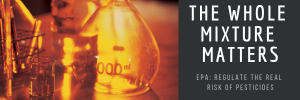
 (Beyond Pesticides, March 14, 2019) A
(Beyond Pesticides, March 14, 2019) A 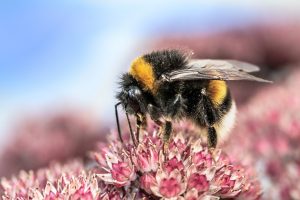 (Beyond Pesticides, March 13, 2019) A study on the impact of two neonicotinoid pesticides shows differential gene expression in bumblebees (Bombus terrestris) after exposure. Considering the current
(Beyond Pesticides, March 13, 2019) A study on the impact of two neonicotinoid pesticides shows differential gene expression in bumblebees (Bombus terrestris) after exposure. Considering the current  (Beyond Pesticides, March 12, 2019) Fifty years after the end of the Vietnam War, the Agent Orange byproduct dioxin continues to contaminate Vietnamâs soils and wildlife, and subsequently affect human health. InÂ
(Beyond Pesticides, March 12, 2019) Fifty years after the end of the Vietnam War, the Agent Orange byproduct dioxin continues to contaminate Vietnamâs soils and wildlife, and subsequently affect human health. In  (Beyond Pesticides, March 11, 2019)  We must stop the expanded commercialization of genetically engineered pesticides. The failure of the U.S. Environmental Protection Agency (EPA) to fully evaluate environmental impacts of gene-manipulating pesticides raises serious concerns in light of the agencyâs ongoing failure to predict ecological effects of pesticides, such as the dramatic decline of pollinators.
(Beyond Pesticides, March 11, 2019)Â Â We must stop the expanded commercialization of genetically engineered pesticides. The failure of the U.S. Environmental Protection Agency (EPA) to fully evaluate environmental impacts of gene-manipulating pesticides raises serious concerns in light of the agencyâs ongoing failure to predict ecological effects of pesticides, such as the dramatic decline of pollinators. (Beyond Pesticides, March 8, 2019)Â Researchers from the U.S. and Switzerland have
(Beyond Pesticides, March 8, 2019)Â Researchers from the U.S. and Switzerland have 
